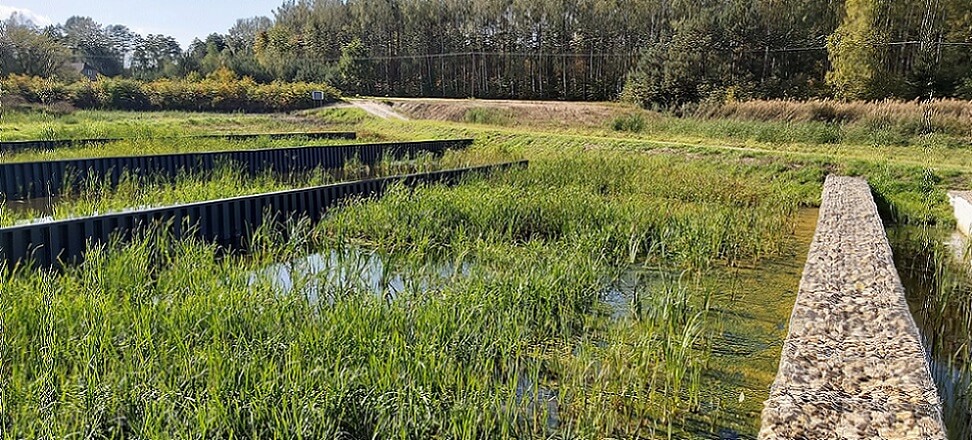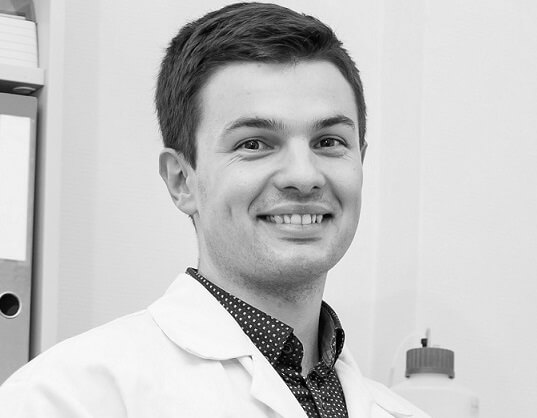What is ecohydrology and what assumptions is it based on? How does the ecohydrological approach contribute to a comprehensive understanding of the functioning of aquatic ecosystems? How does an ecohydrologist look at the problem of water conservation? Dr. Pawel Jarosiewicz answers these questions in the current issue of “Water Issues”.
Ecohydrology – a common language for water speakers
A large group of water professionals begin their speeches by outlining three basic problems with water resources: there is too much water, too little water or it is polluted. While there is no denying the validity of these observations, it is worth considering what gives magical, life-like power to this three-headed hydra. Many experts, including those associated with UNESCO’s Intergovernmental Hydrological Program, feel that the root of the problem lies in a lack of dialogue that stems from a lack of understanding. What terms we use, and the hierarchies of needs and goals we employ, depend on the information bubble in which we live. Sectarianism and lack of a common language do not help solve complex water problems.
Therefore, the United Nations, among others. through the UNESCO Intergovernmental Hydrological Program, launched in 1975, attempts to create a common language for people talking about water. Thus, on the basis of the scientific achievements flowing from ecological and hydrological research, a new paradigm – ecohydrology – was built and then began to be implemented.
Ecohydrology seeks to understand the complex world of relationships between ecological and hydrological processes, from the scale of the bacterial genome all the way down to the level of the entire catchment. On the basis of accumulated knowledge, systemic solutions are being developed that are capable of effectively and long-term mitigation of human impact on the environment, while increasing the resilience of ecosystems. Ecohydrology also provides a methodology, in the form of three rules of thumb, which arrange the actions and analyses undertaken into a logical whole. These rules, as well as examples of their practical application, are described in detail in Professor Zalewski’s book synthesizing the issue of ecohydrology, published in 2020. By PWN.
And the EH rule
Water is the basis of biological and geochemical processes on our planet. According to the concept of regulation of abiotic and biotic factors presented by Zalewski and Naiman (1985), abiotic factors have a dominant function in shaping the ecosystem. Therefore, the first rule of ecohydrology points to hydrological processes as the starting point for formulating comprehensive solutions. In hydrology, the basic spatial unit is the catchment area, i.e. the area from which water enters a receiving body, such as a river. Therefore, ecohydrology considers ecosystems from the point of view of that particular area, the hydrological processes historically occurring in it, and the degree of human interference in their functioning, both through land degradation and introduced pollution. Hydrological processes are the basis for further consideration of ecosystem structure, but also for quantifying pressures, both in terms of hydrology and pollution loads.
EH Rule II
The second step, after recognizing the hydrology and pressures present in the catchment, is to analyze the ecosystems and processes (elemental cycling and energy transfer) to link them to the hydrological cycle. According to the principle of dual regulation, ecosystems perform an important function – they stabilize the hydrological cycle, and their degradation negatively affects water resources, both quantitatively and qualitatively. For the purposes of classifying the measures taken, a distinction is made between ecosystems that absolutely must be protected due to their unique qualities, as well as ecosystems that have been modified by man, the so-called “ecosystems”. novel ec osystems (a term introduced by Hobbs and co-authors). In the latter, ecological functions have been heavily altered by man, and their restoration, even partial, is part of the ecohydrological strategy and our goal for action. The second rule of ecohydrology can also be considered at the level of fundamental biological, geochemical and physical processes. Bacterial, plant and animal metabolisms, together with processes such as sorption, sedimentation and mineralization, affect the proper circulation of elements, as well as a high potential for self-purification. This ability of ecosystems to self-repair under favorable conditions is very important in the face of human pressure on water resources. Research confirms that even when complex organic pollutants such as pesticides, antibiotics and other chemicals are present, the environment has some potential to buffer and degrade them.
EH Rule III
The third rule of ecohydrology puts into practice the knowledge gained in the previous two. By identifying the types of pressures, quantifying ecohydrological processes and understanding their evolutionary pattern at the catchment scale, it is possible to propose systemic solutions that are key to sustainable water resources management. In addition, the same logic scheme can be applied to the creation of new Blissful Nature Solutions (RCNs), implemented on a smaller scale, such as a residential neighborhood or municipality. RCNs are efforts to protect, manage or restore natural ecosystems. They respond to today’s challenges, such as climate change, quality of life, food and water security. It is worth mentioning that one of the world’s leading teams in the development and implementation of RCN operates in the heart of Poland, in Lodz, Poland, in two scientific units: The European Regional Ecohydrology Center of the Polish Academy of Sciences and the UNESCO Chair of Ecohydrology and Applied Ecology at the University of Lodz. Among the popular technologies is the Sequential Sedimentation-Biofiltration System (pictured), which improves the quality of water discharged by wastewater treatment plants and rainwater from urban areas with large amounts of sediment. On the other hand, Highly Effective Ecotone Zones, capable of reducing nitrogen or phosphorus pollution even in a small area, as well as other technologies based on the action of denitrification barriers, have been developed for agricultural areas, excelling in the removal of nitrogen pollution.
The rapid development of ecohydrology and the demand for Near Nature Solutions for the water sector have also resulted in market changes and the development of competent companies that offer new approaches to water management. Given that these types of solutions account for only 1% of overall investment in the water sector, the development of these technologies and cooperation between science and the private sector are critical to their implementation.
In summary, ecohydrology means harmonization of ecological knowledge and best hydroengineering solutions, complemented by social and legal sciences. The approach developed by ecohydrology is described as transdisciplinary, i.e. one that combines different areas of knowledge to create new (innovative) solutions. The jointly developed methods, or perhaps even the process of creating them, provide a platform for establishing dialogue. How important in view of today’s complex problems of the water sector.
For more on ecohydrology, check out the #EkoHydroBase educational videos on YouTube.
Pawel Jarosiewicz holds a PhD in biological sciences, is an assistant professor at the European Regional Center for Ecohydrology of the Polish Academy of Sciences and an assistant at the UNESCO Department of Ecohydrology and Applied Ecology at the University of Lodz. He serves as technical editor for the journal Ecohydrology&Hydrobiology and as chairman of the Polish chapter of the Young Professionals Network – the Association for Aquatic and Environmental Engineering and Research (IAHR). His research work includes. developing Near Nature Solutions for improving the quality of water resources and adapting to climate change using ecohydrology. He developed and marketed the BioKer formulation for the removal and recovery of phosphorus from the aquatic environment. For this he was awarded a gold medal at the International Innovation Fair in Paris.
In the article, I used, among other things. From the works:
- Jurczak T., Wagner I., Kaczkowski Z., Szklarek S., Zalewski M. (2018). Hybrid system for the purification of street stormwater runoff supplying urban recreation reservoirs. Ecological Engineering, 110, 67-77
- Zalewski M. (ed) (2020). Ecohydrology. Scientific Publishers PWN SA
- Zalewski M., Janauer G.A., Jolankai G. (1997). Ecohydrology: a new paradigm for the sustainable use of aquatic resources. Ecohydrology. A New Paradigm for the Sustainable Use of Aquatic Resources. Paris, UNESCO IHP
- Zalewski M., Naiman R. J. (1985). The regulation of riverine fish communities by a continuum of abiotic-biotic factors. [w:] Habitat modification and freshwater fisheries. Butterworths Scientific, ed. J.S. Alabaster, London

 Polski
Polski






